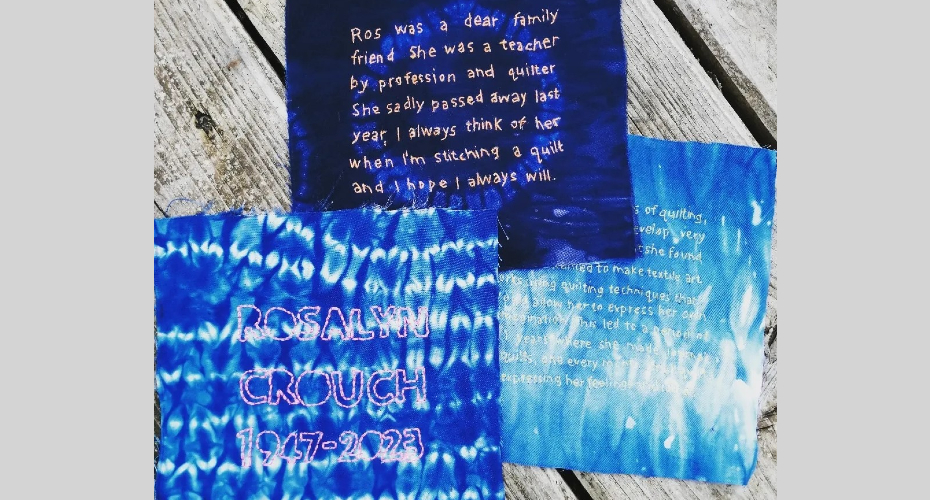Research project launches public appeal for patches and decorative materials

Picture courtesy of Ruth Broadway
Members of the public are being invited to share patches of material for use in a new patchwork at the heart of a research project exploring stories around women’s creative lives.
Researchers at the University of Exeter are asking for people to send them 12cm square fabrics, which will be stitched together by artist Ruth Broadway and placed on display early next year.
Those submitting materials to the Patchwork Object Project are also being asked to provide an accompanying explanation of why they have chosen that particular piece or why it is meaningful to them in relation to the theme of women’s creative identities.
Led by academics in Exeter’s Department of English and Creative Writing, the Patchwork Object Project is one of the main outputs of the Arts and Humanities Research Council-funded The Art of Fiction. This is investigating the connections between 19th century women’s writing and decorative art, and how judgements formed during this time about the value of certain art forms – which impact women’s creative identities to this day.
“Art forms and techniques associated with the popular, the everyday, and the feminine have historically been considered trivial or second rate,” says Dr Patricia Zakreski, Senior Lecturer in Victorian Literature and Culture, and project lead. “Decorative and ornamental craft work was often deemed nice but frivolous, a pastime followed by mainly female practitioners as a way of filling time, relaxing or escaping from the ‘real world’ of professional work.
“What this project seeks to do is challenge that ‘hierarchy of art’ and encourage a re-evaluation of what Walter Crane described as “the art of the people, the art of common things and common life”.”
Alongside project partners MAKE Southwest, the team has been holding ‘community making days’ and this has already helped to produce several patches for the collage. Now they have launched an appeal to the public with a promise that all items meeting the criteria will be included in Ruth Broadway’s art piece.
“We’re welcoming the work of everyone, whatever form it comes in,” says Dr Alex Gushurst-Moore, Post-Doctoral Research Fellow on the project. “This is not about whether something is ‘good’ or ‘bad’, but about having the opportunity to be creative. We hope that the final work is a rich patchwork of embellished scraps, pieces of material with a story, and patches made from scratch.”
Patches can be stitched, painted or beaded, or be a piece of material that is itself significant to a person’s story. It should be 10cm square, with a 1cm border to enable it to be stitched to surrounding squares – and people can submit as many patches as they like.
“In the 18th and 19th century, women were largely excluded from accessing the materials and training to enter ‘serious artforms’ like fine art and sculpture,” adds Dr Zakreski. “While much has changed in that regard, the legacy of that underappreciation of decorative arts persists. So, our hope is through this project we can learn more about women’s creative lives and provide an opportunity for both men and women to tell us stories about inspirational female creativity.”
For more details about the project, including information on how to submit patches, visit the University website. The closing date for submission is September 30, 2024.



